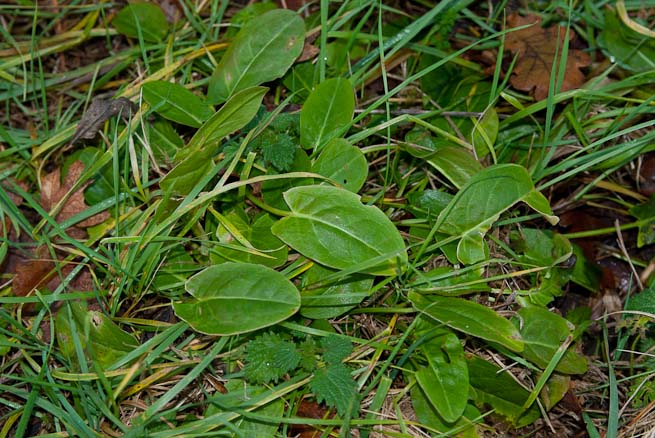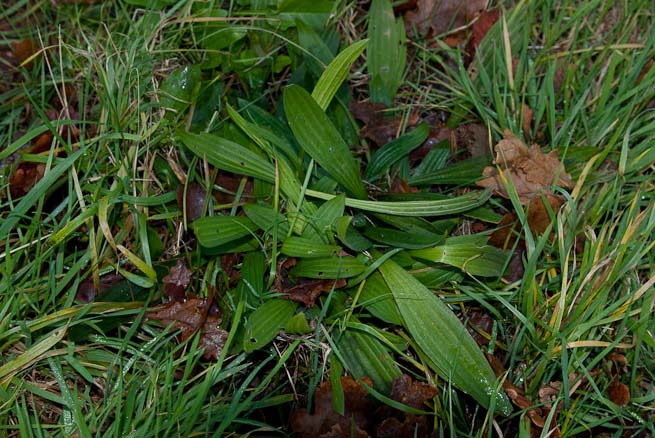The word perennial derives from the Latin per (meaning throughout) and annus (meaning year), and applied to plants indicates species that persist from one year to the next. This doesn’t necessarily mean, though, that the above-ground parts of the plants persist throughout the winter. For example, a Daffodil is a perennial that survives from one year to the next due to its underground bulb.
Two perennial plants with edible leaves that I’ve seen in good condition while out and about this week are Common Sorrel, Rumex acetosa, and Ribwort Plantain, Plantago lanceolata.

Common Sorrel is a common plant of moist areas such as lush meadows, wayside verges, woodland clearings and riverbanks. It has an elongated leaf with a rounded tip and two ‘wings’ that extend towards the stem. The leaves feel quite thick and firm for their size and a little rubbery in surface texture.
Common Sorrel contains oxalic acid which gives sorrels their distinctive sharp, acid taste reminiscent of that of the peel of fruits such as apples or plums.
Common Sorrel has long been put to culinary use, bringing a distinctive flavour to various sweet and savoury dishes. A number of ideas and recipes are mentioned, for example, in Richard Mabey’s book Food for Free.

Ribwort Plantain is a very common plant in the UK. It has long, lance-shaped leaves (NB the lanceolata element of its scientific name) which have very well defined ribs running along their length (remember this as the rib part of ‘ribwort’).
Similar to Common Sorrel, Ribwort Plantain grows in grassy areas such as meadows, riverbanks and waysides. The leaves are edible and best steamed/lightly boiled. The ribs make the steamed leaves stringy, however, so it’s best to cut them up first.
Have you tried either of these plants? Do you have any recipes to share? Let us and other readers know in the comments.
Latest posts by Paul Kirtley (see all)
- The Swedish Firesteel - January 5, 2023
- Kevin Callan and Paul Kirtley in Conversation - April 25, 2020
- Kevin Callan and Ray Goodwin in Conversation - April 18, 2020

Austin Lill
Have to say, I usually think of Plantain in medicinal terms and have never eaten it.
Paul Kirtley
Hi Austin, have you used Ribwort Plantain for treating coughs and colds at all?
Matt Batham
I too was more familiar with the healing properties of plantain. Used as a pultice to encourage the healing of cuts, it is said to have some anaesthetic qualities aswell as encouraging cell growth. The fluid gained from working the leaves is also good for cleaning wounds in the absene of clean water.